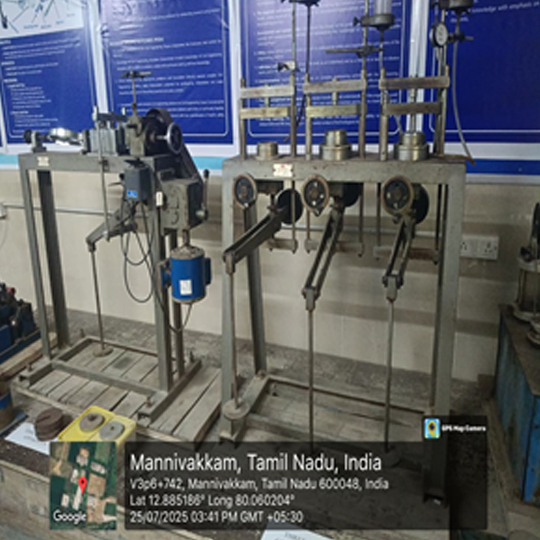Laboratory
Soil Mechanics Laboratory
Soil Mechanics Laboratory
Objective:
The primary objective of the Soil Mechanics Laboratoryis to provide civil engineering students with practical experience in characterizing the engineering properties of soils. This includes familiarizing them with standard laboratory testing procedures to determine physical and mechanical properties such as grain size distribution, Atterberg limits, compaction characteristics, shear strength, and consolidation behavior.
Outcomes:
Students will be able to:
- Conduct standard laboratory tests on soil samples to determine fundamental properties such as specific gravity, water content, unit weight, and void ratio.
- Perform grain size analysis (sieve analysis and hydrometer analysis) to classify soils and understand their permeability characteristics.
- Determine Atterberg limits (liquid limit, plastic limit, and shrinkage limit) to assess the consistency and plasticity of fine-grained soils.
- Conduct compaction tests (Proctor tests) to establish optimum moisture content and maximum dry density for various soil types, crucial for earthwork construction.
- Evaluate the shear strength parameters (cohesion and angle of internal friction) of soils using direct shear and unconfined compression tests.
- Perform consolidation teststo determine the compressibility and time-dependent settlement characteristics of cohesive soils.
- Operate and calibratevarious geotechnical laboratory equipment, including sieves, hydrometers, Atterberg limit devices, compaction molds, shear boxes, and consolidometers.
- Accurately collect, record, and analyzeexperimental data, including plotting curves and interpreting results according to relevant Indian Standards (IS codes).
- Prepare comprehensive technical reportsdetailing experimental procedures, data analysis, results, and conclusions, demonstrating effective communication of geotechnical findings.
- Relate the measured soil properties to their implications for geotechnical design, such as bearing capacity, slope stability, and settlement analysis.
- Adhere to safety protocols and ethical considerations within a soil mechanics laboratory environment.






